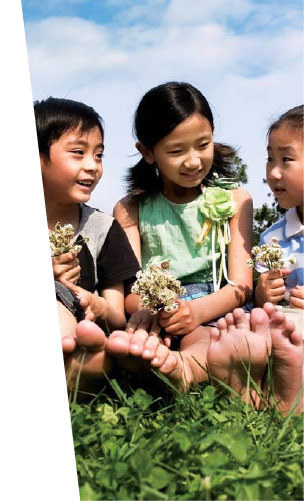
Consultation and Evaluation
The first step of Myopia Management System™ is to collect important information for evaluation:
-
Degree of Myopia of the child
-
Family history: whether the parents are myopic
-Both parents are myopic, one of the parents are myopic or both parents are not myopic -
Daily habits
-Amount of time spent on outdoor activities
Who are at high risk?
Risk factor: Family History2, 3, 4, 5
Compared to having no myopic parents:
-
Having child with 2 myopic parents: 5.1X more likely to be myopic
-
Having child with 1 myopic parent: 2.1X more likely to be myopic
Risk factor: Inadequate Outdoor Activities9
-
A large scale in Sydney Myopia study 2003-2005 to investigate myopia prevalence in relation to near work and outdoor activity.
-
7 year olds (n=1756) and 12 year olds (n=2367).
-
Lowest risk for myopia was found in children with highest levels of outdoor activity.
-
Children with low outdoor activity and high near work hours per week had 2.6x the risk of myopia than high outdoor/low near work children.
-
Low outdoor/low near work groups had a higher risk for myopia than high outdoor/high near work group.
Combination of two risk factors2
-
Highest Risk: 2 myopic parents + little outdoor activities
- 60% chance of having myopia if < 5 hrs/wk of sports or outdoor activities
- 20% chance of having myopia if ≥ 14 hrs/wk of sports or outdoor activities -
Lowest Risk: no myopic parents + lots outdoor activities
- Outdoor activity did not equate to less near work
Increased time outdoors decreases the chance of having myopia2
-
Jones LA, Sinnott LT et al. Parental history of myopia, sports and outdoor activities, and future myopia. Invest Ophthalmol Vis Sci 2007 Aug;48(8):3524-32.
-
Ip JM, Huynh SC et al. Ethnic differences in the impact of parental myopia: Findings from a population-based study of 12-year-old Australian children. Invest Ophthalmolo Vis Sci 2007 Jun;48(6):2520-28.
-
Young TL, Metlapally R, Shay AE. Complex trait genetics of refractive error. Arch Ophthalmol 2007 Jan;125(1):38-48.
-
Tang WC, Yap MK, Yip SP. A review of current approaches to identifying human genes involved in myopia. Clin Exp Optom 2008 Jan;91(1):4-22.
-
Rose KA, Morgan IG et al. Outdoor activity reduces the prevalence of myopia in children. Ophthalmology 2008 Aug;115(8):1279-85.







